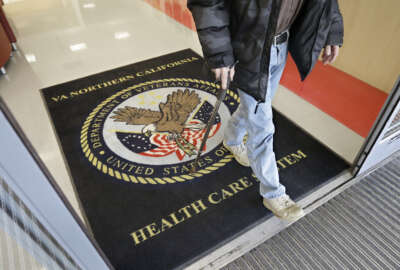
VA watchdogs: Results, responsibility needed for agency IT updates
Leaders at the Veterans Affairs Department pledge to Congress that the money and time they've been given to help overhaul the agency's IT systems will not be in...
The Veterans Affairs Department and Congress agree that care and support of veterans is a top priority, but they don’t see eye-to-eye when it comes to the time and money spent on that mission.
Speaking to the Senate Veterans Affairs Committee, Dr. David Shulkin, the undersecretary for health at VA, said he understands members’ impatience to see results in the department’s IT modernization.
“But I also want to let you all know that we are really making progress and we’re making real progress. Our top priority has been access and fixing the access crisis,” Shulkin said, highlighting that the agency is on track to close 100 percent of the VA inspector general’s IT recommendations by the end of 2017. Shulkin said there’s been a 95 percent reduction in the number of people with elevated privileges for health accounts, as well as the identification of 21 million critical vulnerabilities that when addressed “are going to make us safer.”
“This isn’t to say we should be patted on the back, but this is to say the progress is real,” Shulkin said. “We have a lot to do, I’m impatient, we’re going to continue at it.”
But Sen. Patty Murray (D-Wash.) said she was concerned by the department’s change of heart toward its electronic records system VistA, and “by the lack of long-term planning and whether the time and money invested so far will really be for nothing.”
“We’ve been hearing that for a very long time,” Murray said. “I’ve sat here and heard that over and over again: now it’s going to be integrated, now we’re talking to [the Defense Department]. I wish you the best, but we really do need results.”
Looking to tomorrow
Results, along with readiness and responsibility, were the themes of the June 22 committee hearing.
Shulkin said when LaVerne Council, the department’s assistant secretary for information technology, arrived at VA, she was charged with assessing VA’s IT systems and where they needed to go in the future, because “we don’t want to find ourselves, 50 years down the road, with outdated technology.”
Council pointed out that VistA is a 40-year-old product, and when her office started to think about veteran care and clinical management, “it required us to look at how we’re moving data, how we’re doing analysis, how we’re using the clinical information, how we’re using our supply chain, how we’re getting pharmacies aligned.”
“As we started to go through it, we said what can technology do today that it couldn’t do yesterday,” Council said. “It can do a lot.”
Sen. Mike Rounds (R-S.D.) wanted to know about health record interoperability with the private sector, and Shulkin told him that the VA does have a health information exchange it shares records with for more than 700 hospitals, and thousands of clinics and providers.
“That’s an off-the-shelf system, so we are encouraging more providers that do a lot of business with the VA to join this effort through the health information exchange,” Shulkin said.
Sen. Johnny Isakson (R-Ga.), also talked about interoperability of medical IT, and how in his opinion it is “the single biggest problem in health care today.”
Council told him VA’s digital health platform would be embracing that interoperability, and has been on the cutting edge “in leveraging software as a service, the cloud, and also engaging in a non-infrastructure based concept,” Council said. “So that we can be much more agile, much more future-ready and only one instance at all times available to our friends in [the Veterans Health Administration].”
Isakson asked Valerie Melvin, IT director at the Government Accountability Office, whether VA has a good evaluation process for determining needs and purchasing equipment.
Melvin said while VA has had processes in place to evaluate their information technology needs, but “what we found were gaps in terms of their ability to really collaborate with the business side and know fully what those needs are and then to carry them to fruition in terms of development.”
High risk
Melvin drew part of her testimony from GAO’s latest review of VA’s IT challenges. Auditors said the past five years are dotted with missteps, including the unsuccessful modernization of outpatient scheduling, spending nearly $130 million on an electronic storage system for surgical implants that was eventually suspended, and taking roughly 20 years to make a “fully interoperable” health records system between VA and the Defense Department, which is still ongoing.
“The use of information technology is critically important to VA’s ability to serve veterans, and each year the department spends billions of dollars on information systems and related assets,” Melvin said. “However, challenges in the department’s management of information technology over many years have led to a number of failed initiatives, and contributed to our designating VA health care as high risk.”
VA signed off in April on the documentation attesting it has met the interoperability standards. Defense signed off in October.
Sen. Richard Blumenthal (D-Conn.) wanted to know who bears the responsibility for things taking so long, and Melvin said it fell to leadership at both agencies.
“A longstanding concern that we’ve had with interoperability is in terms of really what is interoperability supposed to be,” Melvin said. “We’ve not been able to over the years really get from either agency what they mean in terms of full interoperability, what that end-state is supposed to be in the way of the technology that exists and how that technology is used. As we’ve looked at this over the years, we’ve had a lot of discussions with VA and DoD, we’ve had a lot of assurances along the way that that was being taken care of, but what we consistently see is really a lack of the clear planning and the clear definition of what it is and how they plan to implement measures and goals to get there.”
Copyright © 2024 Federal News Network. All rights reserved. This website is not intended for users located within the European Economic Area.
Related Stories





